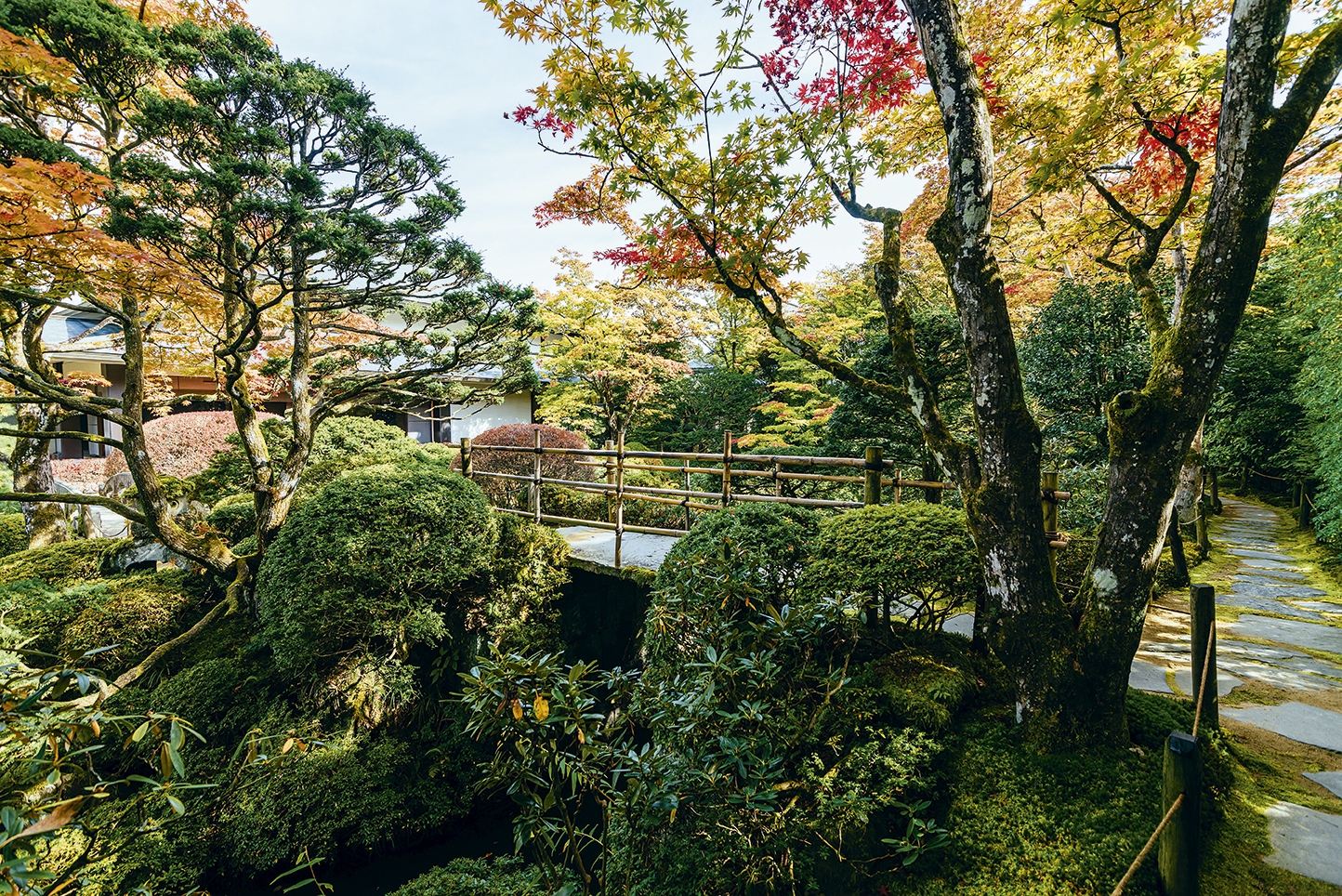
Food and Travel Review
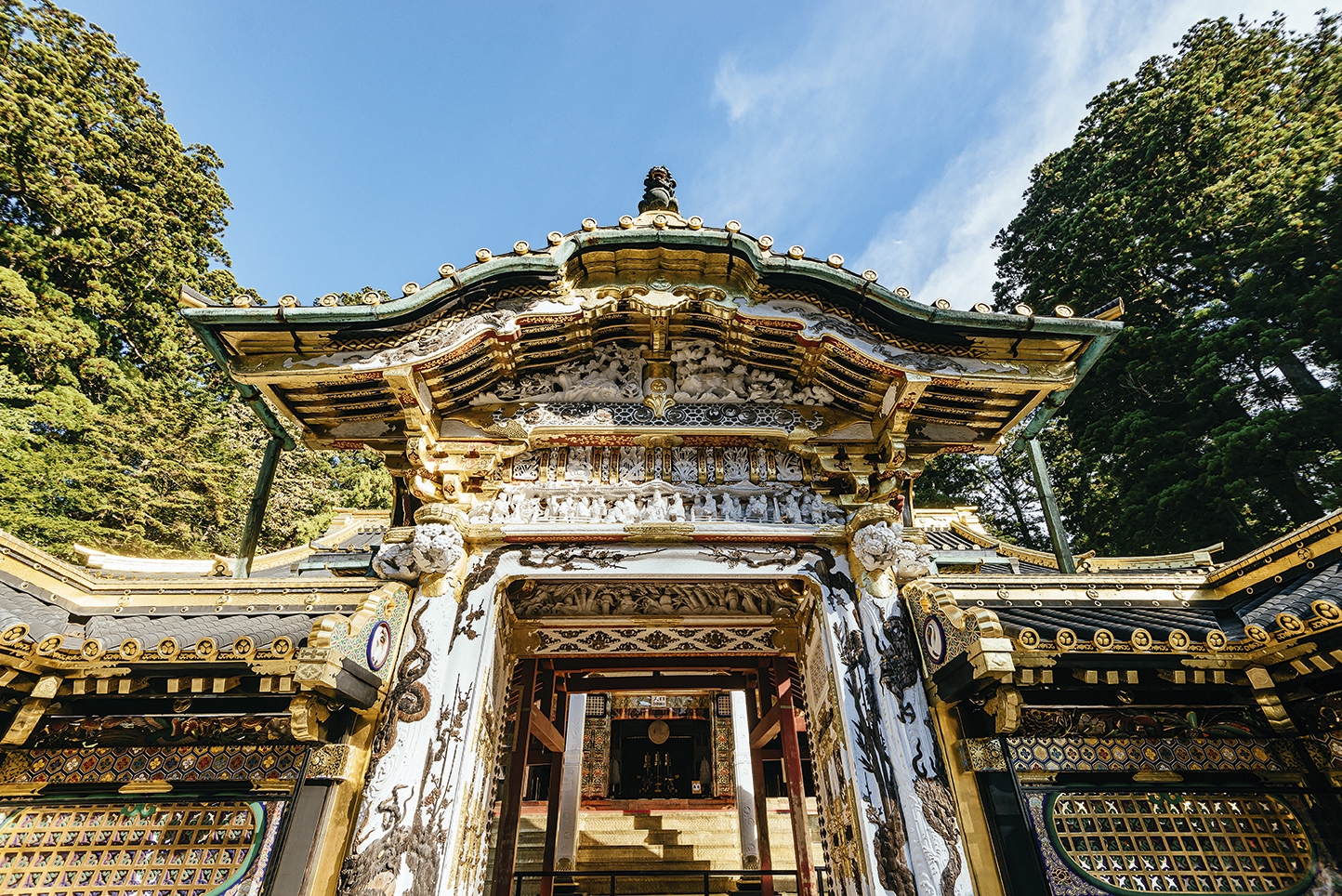
I can’t touch natto for breakfast,’ says Yasuhiro Watanabe, his gaze fixed on the next batch of rice steaming at his 180-year-old sake brewery. Natto, a staple of Japanese breakfasts, shares a place in morning routines much like (but, to be clear, quite unlike) marmalade or muesli. These fermented soybeans, with their fusty aroma, mulchy texture and peculiar stringy stickiness, aren’t universally adored. Yet, despite the occasional feelings of aversion, many people are still happy to eat them regularly for the well-known health benefits. A spoonful of these Marmite-like beans provides an instant dose of minerals such as manganese, iron and zinc – not to mention the probiotics that are so beneficial to gut health.
It’s not that Yasuhiro dislikes natto – he’s quite partial to it, especially stirred into hot rice with a raw egg. But he, like everyone else in the brewery, knows better than to indulge here. ‘The bacteria are so potent that even a trace could spoil the whole batch,’ he explains, with a hint of concern.
As autumn gives way to winter, the Watanabe Sahei Shoten sake brewery shifts into full gear. From November to March, the air is crisp, the water is pristine and the freshly harvested rice is at its peak. These few ingredients – rice, yeast and koji mould – are all that’s needed to craft the brewery’s signature junmai sake. Sake thrives in cold, wintry air. At temperatures of between 5C and 10C, the yeast’s slow fermentation process imparts a distinct, nuanced flavour. Close your eyes and you might just be sipping Watanabe’s Junmai Daiginjo premium sake – its taste reminiscent of melon, green banana, apple and fresh strawberries, all captured in a delicate, aromatic brew.
But it’s the dynamic duo of koji and yeast – the organisms responsible for converting steamed rice starch into sugars, then fermenting those sugars into alcohol – that are jeopardised by the Kryptonite-like natto beans. There’s also a modern challenge threatening the process. ‘These days, it can be tricky to keep the temperature low enough,’ Yasuhiro tells me. ‘Occasionally, the toji-san [master brewer] resorts to sitting large blocks of ice on the vats. Not so long ago, the opposite problem arose: straw jackets and bare lightbulbs were needed just to stave off the chill.’
The higgledy-piggledy wood-beamed brewery, which first opened in 1842, sits in downtown Nikko, 8km south-east of the Unesco World Heritage shrines that dominate the guidebooks. This unassuming part of town wouldn’t win any architectural awards, but that doesn’t mean it hasn’t earned acclaim. Watanabe’s Junmai Daiginjo, for example, has garnered medals from competitions in Bordeaux and the United States. A couple of streets away, Katayama Shuzo – a family-run brewery, also now in its seventh generation – won gold at the Japan Sake Awards. Katayama’s speciality is an undiluted sake (genshu), which uses mountain water sourced from a well 15m underground, although just 275m away, the gin-clear River Daiya rushes past. The Daiya flows through Nikko, from the sake breweries in Imaichi district, through the tourist-filled central town, and on to Oku-Nikko. The river’s source is in Nikko National Park, which sprawls across 1,150sq km of the north- eastern Tochigi prefecture, a largely forested and landlocked region characterised by icy winters and drenching summers. The three distinct sections of Nikko stretch along 20km of the river, and reaching the top requires an hour’s drive up a winding, one- way road. At the top, towering mountains – most notably Mount Nasu, a complex volcano with five peaks – offer vistas over waterfalls, streams and Lake Chuzenji, Japan’s highest natural lake.
The Daiya river begins at the lake, cascading 96m over Kegon Falls before continuing its journey downstream through the Kanmangafuchi Abyss, where its banks are lined with more than 60 wool-capped Buddhist Jizo statues. From there, the river flows near the famed shrines, crossing the iconic Shinkyo Sacred Bridge, which is widely regarded as one of the ‘three most beautiful bridges in Japan’. The bridge marks the entrance to a cedar forest, where 103 buildings and structures make up the Unesco World Heritage site. Nikko’s shrines owe much of their celebrity status to Shogun Ieyasu, the 16th-century founder of the Tokugawa dynasty. His tomb rests at Toshogu Shrine, one of two, along with a Buddhist temple, nestled in the forest. Toshogu’s ornate main hall is a must-see, as is its sacred horse stable, home to the famous carving of the three wise monkeys (’see no evil, hear no evil, speak no evil’). Another highlight is the lush Shoyoen Garden at Rinnoji Temple, which offers a striking contrast to the towering conifers surrounding it.
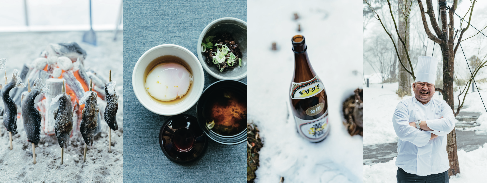
When the train line from Tokyo first reached Nikko in 1890, the journey took a full day across 152km of track. A sunrise departure from the capital saw the train pulling into Nikko – whose name means ‘sunshine’ – only at sunset. These days, trippers can make the journey much faster, arriving by mid-morning and disembarking outside the Kanaya Hotel Bakery, right by the Shinkyo Bridge.
A century ago, Kanaya Hotel was the grandest address in town, its sobakawa buckwheat pillows cushioning the weary heads of luminaries like Frank Lloyd Wright (who stayed in1905, a few years after designing Nikko’s still-operational train station), Albert Einstein (1922) and Emperor Haile Selassie of Ethiopia (1956). Since 1873, the hotel’s kitchens have catered to the cravings of overseas visitors while also feeding a growing Japanese appetite for yoshoku – Western-inspired dishes like omuraisu, a nostalgic plate of ketchup-splashed rice wrapped in a silky omelette. Today, the hotel’s bakery still turns out its signature loaves: ‘royal’, ‘British’ (akin to a milk loaf) and a rustic sourdough ‘campanue’ – a nod to French pain de campagne.
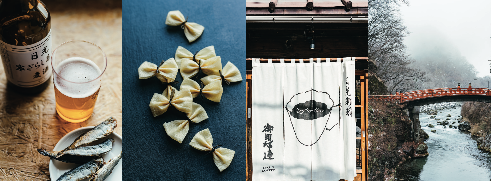
While Kanaya Hotel’s restaurants continue to serve these old- school classics, a more refined step back in time awaits at Meiji-no-Yakata, a restaurant tucked within Nikko’s shrine-studded forest. Housed in a 1920s villa – the former summer retreat of Fred W Horn, the man credited with bringing the gramophone to Japan – the restaurant opened in 1977 but remains firmly rooted in the turn-of-the-century dining traditions of New England meets Meiji-era Japan. Spaghetti with meat sauce, beef hash and rice, and clam chowder grace the menu, alongside regional specialities like Tochigi wagyu, earthy hen-of-the-woods mushrooms and the intriguingly named Yuba and Yasio Trout.
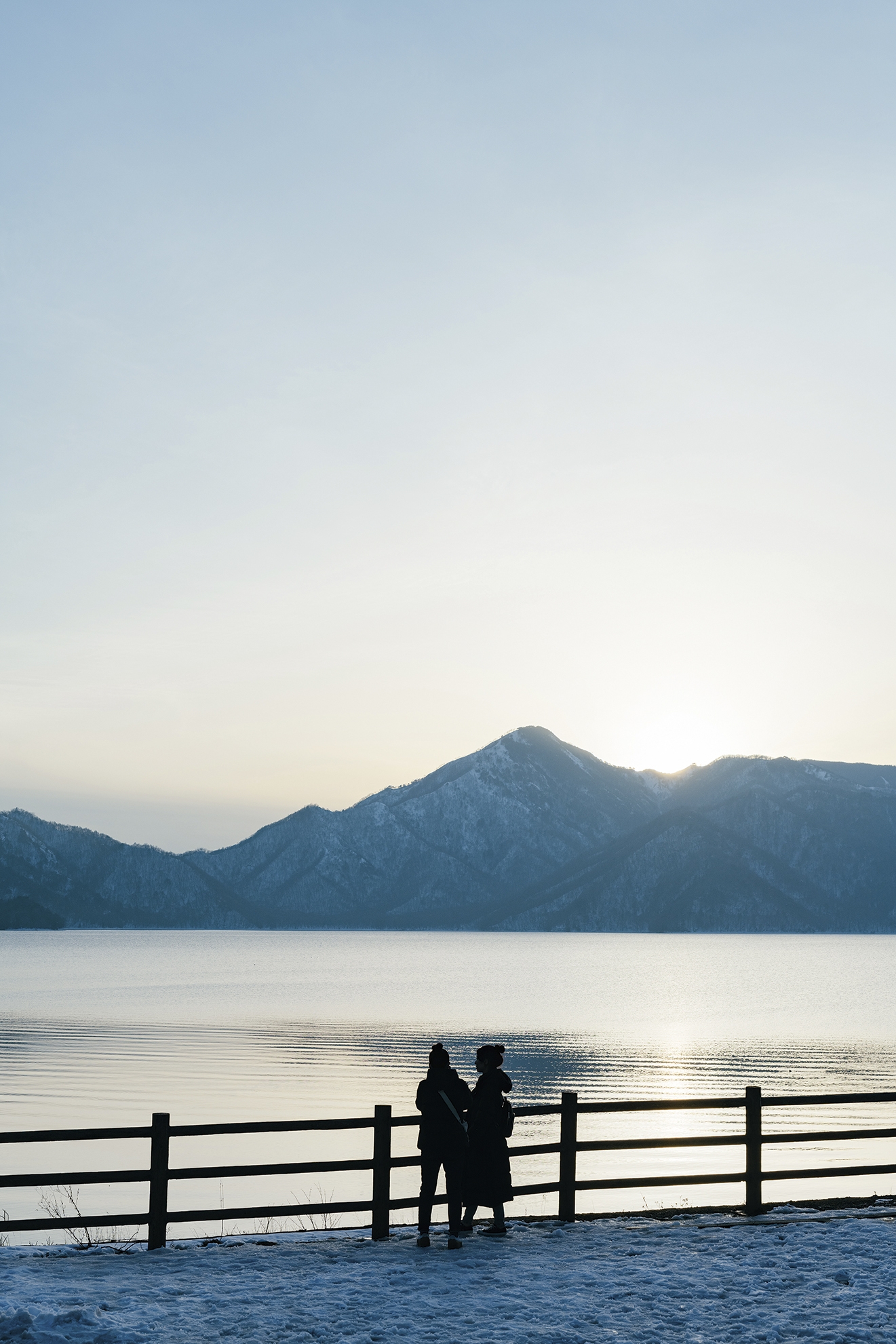
Known locally as masu, the Yasio trout is a rainbow trout sourced from Tochigi’s northern freshwater aquafarms, which also raise cherry salmon, brown trout and the blushingly crimson coho salmon. Yuba, a speciality of Nikko, is a more elusive delicacy. It’s the skin that forms on the surface of soy milk when gently heated to 80C and, unlike tofu, it requires no coagulant, instead developing in thin, silky layers over wide, shallow pans. After around 20 minutes, the film is carefully lifted and draped over poles to drip dry. At this stage, yuba appears fragile – almost slippery – but has a mellow chew and a subtle, creamy flavour. It’s often rolled, steamed and sliced into elegant swirls, served simply as is, or atop a bowl of noodles. Fresh yuba skins can also be used as wrappers, while dried versions are folded into sheets or pinched into farfalle-like bows, ready to be rehydrated and cooked like pasta.A word to the wise: skip the tourist buses at either of the two train stations and walk the mile-long main road to Shinkyo Bridge – effectively Nikko’s unofficial ‘yuba trail’. Along the way, you’ll find inventive takes on this delicate tofu skin, from street snacks to elegant, multi-course kaiseki meals.
Just opposite the station, Sakaeya – a tiny, unassuming shop – deep-fries yuba-wrapped anko, a rich, fudgy, red bean paste, into crisp golden parcels known as yubamanju. The crunchy shell, lightly dusted with salt, provides a satisfying contrast to the sweet filling. A short stroll away, Fudaraku offer a very different expression of Yuba: their musubi consists of a fistful of glutinous rice loosely enveloped in a fresh yuba sheet, its soft, almost floppy texture a dainty counterpoint to Sakaeya’s crisp manju.

A little further along, Zen restaurant take a contemporary approach, swapping traditional nori for yuba in their wagyu- stuffed maki sushi rolls. For those craving a deeper dive into yuba’s versatility, nearby Sunfield and Fudan Kaiseki Nagomi Chaya serve tofu-skin-focused kaiseki, where yuba stars across the various courses. Even Kanaya Bakery get in on the act, incorporating yuba into a brittle biscotti – although whether the fragile ingredient is suited to such a crunchy fate is debatable. A more recent arrival is The Standard Bakers, who bring a touch of Kyoto-style precision to viennoiserie, turning out buttery, impeccably layered pastries alongside a brioche fruit sando – a cloud-like sandwich of Tochigi’s famously sweet strawberries nestled in a mascarpone and cream embrace.
Just 150m away, Girouette lean towards French but aren’t afraid to let the seasons dictate their menu, sometimes using local vegetables with near-reckless generosity. Understandable, when the produce from Tochigi’s farms arrives tasting as if it was plucked from the earth mere moments before hitting the plate. ‘It’s about the mulch,’ says local farmer Akio Ishikawa, brushing claggy black soil from the smooth cheek of a freshly unearthed turnip. ‘Anything from the ground, shed or kitchen gets composted; autumn leaves add richness; everything returns to the soil.’
His father started the farm in 1960, but since Akio and his wife Yuka took over 15 years ago, they’ve fine-tuned its rhythm to a near-symphonic precision. Across their 0.8ha plot, more than 100 crops cycle through the seasons, each planting move planned with chess-like intricacy. On this winter morning, they’re harvesting heirloom carrots, cavolo nero and taro.
By summer, this same furrow will brim with peanuts, kohlrabi, okra and butterfly pea flowers – their indigo petals lending their hue to traditional rice sweets.
‘As well as crop diversity, we companion plant and rotate,’ Yuka says, gesturing towards the neighbouring farm’s rice paddies. ‘They’re fully organic too. We farm with confidence – no herbicides, no pesticides.’ Their small-batch produce finds its way to some of the finest restaurants in the region.‘Fruit and vegetables here are undeniably special,’ says Kensuke Nakamura, executive chef at The Ritz-Carlton, a regular customer of Akio and Yuka’s produce. ‘It’s the combination of soil, climate and an abundance of clear water.
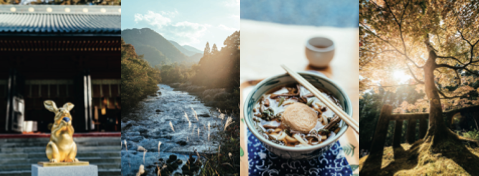
Spring asparagus is exceptional. And the strawberries – fragrant and sweet – are the best in Japan.’ Local yuba and tofu, rice and sake are, naturally, woven through his menus. But it’s Nikko’s everyday artisanal products, both time-honoured and contemporary, that form the foundation: nasu goyoran eggs – remarkably sweet and rich, thanks to hens fed a diet of mugwort, mulberry leaves and seaweed – those famed strawberries and, of course, Tochigi wagyu beef. Oh. And ice. From an ice farm.
Of Japan’s 100 or so himuro, the traditional ‘ice stores’ found mostly in the north, particularly Hokkaido, three remain in Nikko. Like sake brewing, the practice is increasingly at the mercy of the shifting climate. Where the ice-making season once lasted eight weeks, January is now the only reliably cold month. Even so, Nikko’s ice farmers have doubled their efforts, still managing to produce several hundred tonnes each winter. Their frozen output is stored year-round in sawdust-insulated sheds deep in the forest and ends up in local cafés, Kanaya Hotel and The Ritz-Carlton’s cocktail bar, where hand-chiselled blocks chill fine regional whiskies. Some even reach Tokyo’s most Instagram- friendly kakigori (shaved ice) parlours. One such himuro, Mitsuboshi, supplies Sakaeya – the fried yubamanju shop by the station – with ice blocks for its summer kakigori counter. Another, Shogetsu (established in 1894), runs its dessert shop in downtown Nikko, just around the corner from Watanabe brewery. It’s fitting, given these two long-standing crafts, seemingly worlds apart, share a common essence: Nikko’s pristine spring water.
I grab a seat for lunch in Shogetsu’s tarpaulin-sided eat-in area and order a kakigori. From the back room comes a full five minutes of mechanical grumbling and grinding before my dessert arrives – rime-frosted candy floss, just sturdy enough to hold the trickle of syrupy coulis.
Is it brain freeze, or does the himuro ice taste softer than regular ice? Is my tongue numb, or does the frozen water seem to evaporate rather than melt? I can’t decide. But one thing is certain: in Nikko, water doesn’t just flow – it defines.
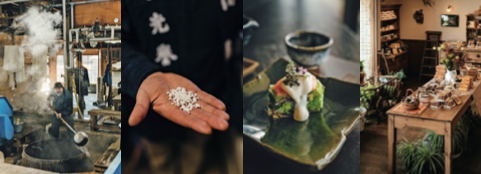
Where to stay
Kanaya Hotel The grand dame of Nikko’s hotel scene set just beside the World Heritage site, Kanaya may show signs of age but retains its charm. Expect old-school dining and thoughtful service. Doubles from £180. 1300 Kamihachiishicho, +81 (0)288 540001, kanayahotel.co.jp
The Ritz-Carlton, Nikko Understated luxury in the national park’s tranquil Oku-Nikko. The spacious rooms are a rare luxury in Japan, and they come with balconies offering stunning vistas as standard. Doubles from £517. 2482 Chugushi, +81 (0)288 256666, ritzcarlton.com
Station Hotel Classic Perfectly positioned opposite the railway terminals, this hotel offers a range of rooms, from modern beds to traditional futons. All come with a satisfying breakfast and access to a range of facilities – including a hot-spring spa, a common feature across accommodation in Nikko. Doubles from £98. 3-1 Aioicho, Nikko City, +81 (0)288 531000, nikko-stationhotel.jp
Travel Information
Just two hours from Tokyo, Nikko is in the prefecture of Tochigi. Its natural beauty is abundant – in the foothills of Mount Nantai, Lake Chuzenji cascades via Kegon Falls into Nikko National Park. Average flight time to Japan from the UK is 13 hours and 40 minutes. Time is GMT+9 and currency is the Yen.
GETTING THERE
British Airways flies from London Heathrow to both Tokyo Narita and Tokyo Haneda airports. There are train and bus services from both airports to Nikko. britishairways.com
RESOURCES
Nikko Official Guide is full of information for your trip. visitnikko.jp
The Japan National Tourism Organization has plenty of tips too. japan.travel
Where to eat
Fudan Kaiseki Nagomi Chaya Specialising in yuba, this intimate spot serves a refined multi-course lunch with fresh, poached, and fried yuba, pickled vegetables and soused ayu sweetfish. Yuba kaiseki from £13. Lunch only. 1016 Kamihatsuishimachi, +81 (0)288 543770
Fudaraku This elegant spot offers a selection of delicate snacks, including the likes of a lotus seed monaka wafer with crushed red beans, a chestnut-packed youkan jelly and their signature yabumusubi – a precariously fragile bundle of savoury rice wrapped in a thin skin, served with pickles. Only 50 servings available each day. Yabumusubi £3.
406-4 Ishiyamachi, +81 (0)288 534623, fudaraku.com
Girouette Charming French restaurant with a reassuringly eclectic menu including pâté de campagne, confit de canard and steak frites. Look to the chalkboard for specials made with local produce and pair with regional wines by the glass. Main with wine from £10. 956-1 Shimohatsuishimachi, +81 (0)288 255001, nikko-yamanaka.com/girouette
The Japanese Restaurant Refined dining at The Ritz-Carlton, Nikko involves Edo-style sushi, live-cooking teppanyaki and a kaiseki dinner celebrating local ingredients. Don’t miss the sommelier’s sake selections, sourced from downtown Nikko. Multi-course dinner £124. 2482 Chugushi, +81 (0)288 255776, japaneserestaurant.ritzcarltonnikko.com
Meiji-No-Yakata Offering yoshoku (Western-influenced cooking) and old- fashioned charm, hearty dishes – omuraisu rice omelette, stuffed cabbage and local yuba and trout – are enjoyed overlooking a tranquil garden. Mains from £9.30. 2339-1 Sannai, +81 (0)288 533751, meiji-yakata.com
Nikko Zen With a front-row seat to its open kitchen, this stylish restaurant serves up yuba in all forms, from wagyu beef maki sushi to a nine-course kaiseki dinner with sake pairings. Wagyu sushi from £4.50.
1007 Kamihatsuishimachi, +81 (0)288 533470, nikko-zen.co.jp
Sakaeya A quirky little food shop tucked among souvenir snacks, Sakaeya serves the delicious yabu manju – a hot-fried, salty-sweet confection best eaten on the spot. Yabu manju £1.25. Handily located opposite Tobu Nikko railway station for a quick pre-departure bite.
Shogetsu Himuro A must-visit shaved-ice café near Watanabe Sahei Shouten sake brewery. With about 25 seasonal kakigori varieties, you can indulge in flavours like melon, pumpkin caramel or the chestnut Mont Blanc. Kakigori from £4. 379 Imaichi, +81 (0)288 210162
The Standard BakersA trendy spot offering coffee and teas, grilled sandos, pastries and a quirky lunch menu that includes pizza, curry and spaghetti in soy milk topped with yuba skin. Conveniently located between the stations and Shinkyo Bridge. Pastries from £2. 597-2 Gokomachi, the-sbk.jp/nikko
Food Glossary
- Ekiben
- Short for eki bento, a lunchbox typically found at specialist or convenience stores within train stations. While eating on trains is generally not permitted, it’s acceptable on many lines, including those between Tokyo and Nikko, provided your seat is equipped with a fold-out or pull-out table
- Kakigori
- A dessert of finely shaved ice, often topped with fruit, syrups or sweet sauces. Best enjoyed year-round, with the finest examples made using ice from Himuro farm and a hand-cranked shaver
- Natto
- Fermented soybeans, commonly consumed at breakfast, often stirred into hot rice with a raw egg
- Sake
- A term used for alcohol in general; the brewed rice wine known as sake outside Japan is called nihonshu here. Junmai sake is crafted from rice, water, yeast and koji, while honjozo includes added brewer’s alcohol. Genshu sake is a high-proof variety (17-21%), but it can be diluted to a lower strength
- Sando
- A sandwich made from pan bread (often fluffy shokupan), with popular varieties including the katsu sando (filled with fried pork cutlet) and the tamago sando (egg and mayo). The term pan also refers to other baked, fried or deep-fried dough products, such as kare pan – a curry-filled version resembling a scotch egg
- Wagyu
- The Japanese cattle, notably the Japanese black breed, are renowned for producing premium beef graded for quality from A to C, with additional scores for marbling (1 to 5) and meat colour. Tochigi beef, for example, must be at least A4 or B4
- Yuba
- The skin formed on the surface of heated soy milk when broughtto 80C. It’s often used as fresh sheets, rolled and steamed, or dried and rehydrated by poaching
Get Premium access to all the latest content online
Subscribe and view full print editions online... Subscribe
